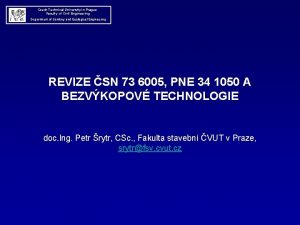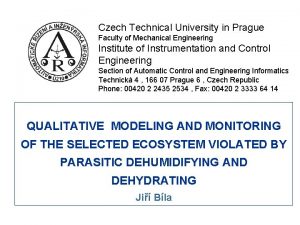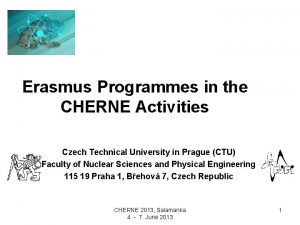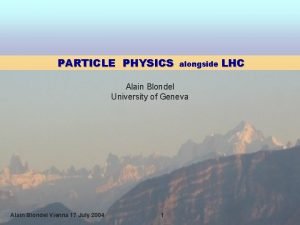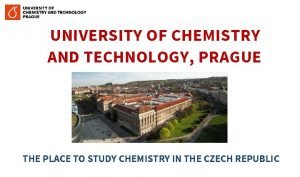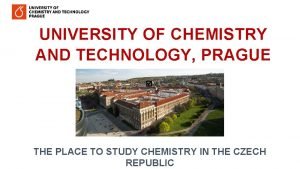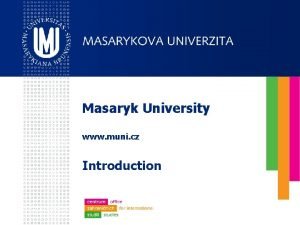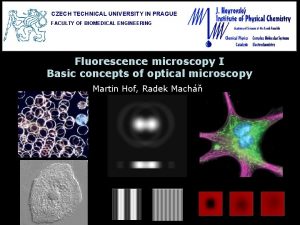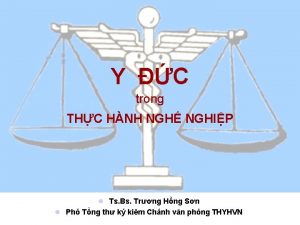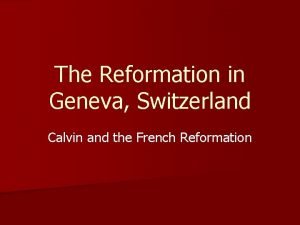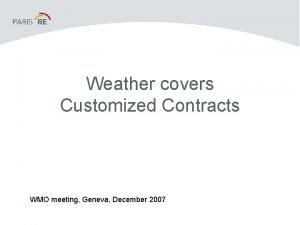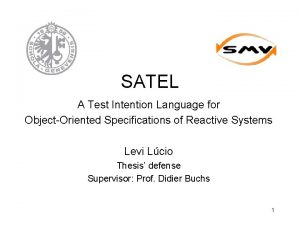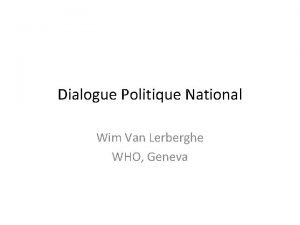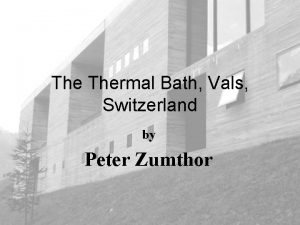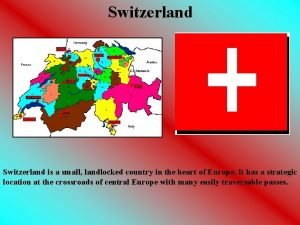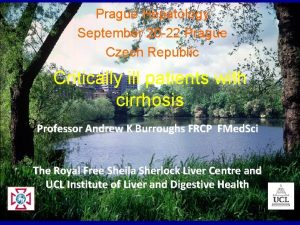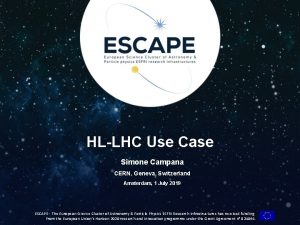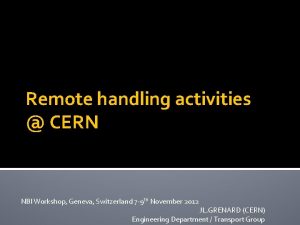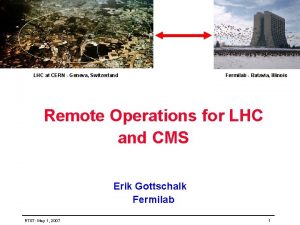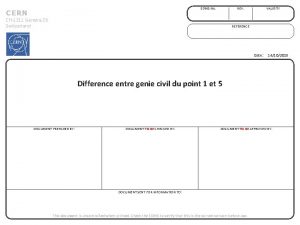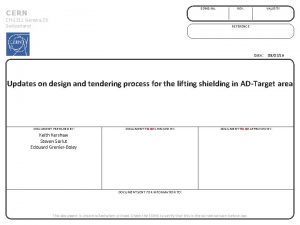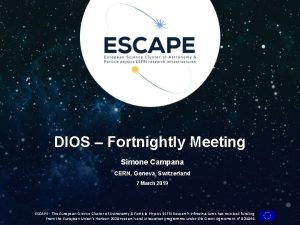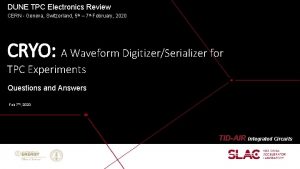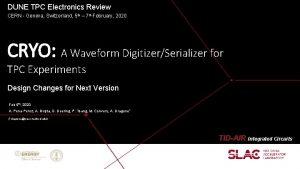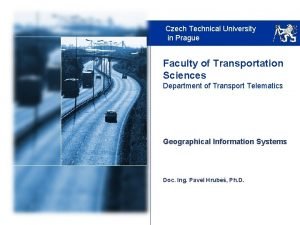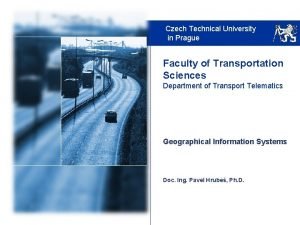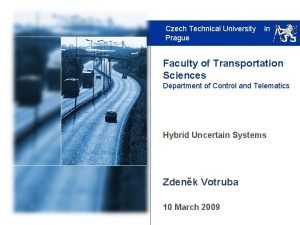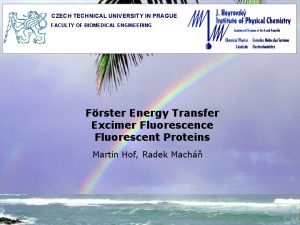CERN Geneva Switzerland Czech Technical University Prague Czech
























![Atom Borh radius a. B [fm] Resonance cτ [fm] π+π– 387 ω(782) 23 πK Atom Borh radius a. B [fm] Resonance cτ [fm] π+π– 387 ω(782) 23 πK](https://slidetodoc.com/presentation_image_h/02aa1a4a8410b3af640ee81eccf5bd67/image-25.jpg)
![K+K− Coulomb pairs ratio R R R 2/19/2021 Q[Me. V/c] 26 K+K− Coulomb pairs ratio R R R 2/19/2021 Q[Me. V/c] 26](https://slidetodoc.com/presentation_image_h/02aa1a4a8410b3af640ee81eccf5bd67/image-26.jpg)



- Slides: 29


CERN Geneva, Switzerland Czech Technical University Prague, Czech Republic Institute of Physics ASCR Prague, Czech Republic Nuclear Physics Institute ASCR Rez, Czech Republic INFN-Laboratori Nazionali di Frascati, Italy University of Messina KEK Kyoto University Messina, Italy Tsukuba, Japan Kyoto Sangyo University Kyoto, Japan Tokyo Metropolitan University Tokyo, Japan IFIN-HH Bucharest, Romania JINR Dubna, Russia SINP of Moscow State University Moscow, Russia IHEP Protvino, Russia Santiago de Compostela University Santiago de Compostela, Spain Bern University Bern, Switzerland Zurich University Zurich, Switzerland

1. Experimental check of QCD using π+K− π− K + and π+π− atoms at PS and SPS CERN. 2. Long-lived π+π− as a new physical tool to check of QCD. 3. Observation of K +K − Coulomb pairs and possibility of K +K − atoms investigation on SPS CERN. 4. The possible new physical method to investigate the particles production in the coordinate space. 2/19/2021 3

The QCD Lagrangians use the SU(3)L*SU(3)R and SU(2)L*SU(2)R chiral symmetry breaking. L(u, d, s) = L(3) = Lsym(3)+ Lsym. br. (3) L(u, d) = L(2) = Lsym(2) + Lsym. br. (2) Lsym. br. is proportional to mq QCD provides cross sections with 1% precision 1. Perturbation theory is working at high momentum transfer Q. 2. Unitarity condition. At large Q, contribution of Lsym. br. to the cross section is proportional to 1/Q 4. Therefore these experiments checked only the Lsym prediction precision. To check the total L(3) Lagrangian predictions, we must study the low momentum transfer Q processes. Tools: Lattice calculations and Chiral Perturbation Theory (Ch. PT) Lattice----- L(3), L(2) Ch. PT------Effective Lagrangians. 2/19/2021 4

The S-wave πK scattering lengths a 1/2 and a 3/2 in the chiral symmetry world are zero. Therefore the scattering length values a 1/2 and a 3/2 are very sensitive to the Lsym. br. (3). For Lattice QCD the πK interaction at threshold is a relatively simple process. It gives πK scattering length values with an average precision of 5%. This precision will be improved in the near future. There is only one experimental data: DIRAC collaboration observed 349± 62 πK atomic pairs (Phys. Rev. Lett. 2016) and measured |a 1/2 -a 3/2| with an average precision of 34% (Phys. Rev. D 2017). 2/19/2021 5

Fig. 1 Method to observe long-lived AL 2π by means of a breakup foil (Pt). The most of the produced π+π- atoms decay (~70%) or are ionized (~6%) in the Be target. The excited (long lived) atoms (~24%) are investigated here. 2/19/2021 6

2/19/2021 7

The DIRAC collaboration Phys. Lett. (2015) observed 436± 61 pion pairs from the long-lived ( 1 10 -11 sec) π+π- atom breakup in Pt foil(Phys. Lett. (2015). The short-lived atoms lifetime measurement allowed to evaluate ππ scattering length combination a 0 - a 2. The study of the long-lived atoms will allow to measure the Lamb shift depending on another ππ scattering length combination: 2 a 0+a 2 and to evaluate the a 0, a 2 separately. 2/19/2021 8

Atom yield for DIRAC at 24 and 450 Ge. V/c per 1 proton-nucleus interaction π+π- atom K-π+ atom K+π- atom θlab=5. 7 o 194∙ 10 -11 22∙ 10 -11 52∙ 10 -11 pp=450 Ge. V/c , θlab=4. 0 o 3400∙ 10 -11 810∙ 10 -11 850∙ 10 -11 125∙ 10 -11 1. 3∙ 10 -11 3. 1∙ 10 -11 1900∙ 10 -11 88∙ 10 -11 97∙ 10 -11 12 ± 2 53 ± 11 24 ± 5 pp θlab pp=24 Ge. V/c , θlab=5. 7 o (DIRAC acceptance) pp=450 Ge. V/c, θlab=4. 0 o (DIRAC acceptance) yield ratio per time unit taking in to account the beam conditions and single particles generation at PS & 2/19/2021 SPS (DIRAC acceptance) 9

DIRAC++ (Setup Isometric view) 2/19/2021 10

The Lattice calculations: for the πK scattering lengths a 1/2 and a 3/2 the precision is~ 5% and will be improved in the near future. The experimental precision for a 1/2 - a 3/2 from the πK atom lifetime measurement is 34%. For the proton beam intensity 3 x 1011 protons/s, 3000 spills per day and running time 5 months the expected accuracy will be 5%. At the same running time the ππ scattering lengths a 0 , a 2 measurement will be improved. a 0 4 -10% precision K. Sasaki et al. , Phys. Rev. 2014, Z. Fu, Lattice ~1% precision a 2 Phys. Rev. (2013), C. Lang et al. , Phys. Rev. (2012), calculations Feng et al. , Phys. Lett. (2010), T. Yagy at al. , Ch. PT 2. 3% precision a 0 and a 2 ar. Xiv: 1108. 2970, S. Beame et al. Phys. Rev(2008) 1. 5% precision a 0 -a 2 Colangelo et al. Nucl. Phys. (2001) Experimental values a 0 -a 2 ~ 4% precision J. R. Bateley at al. , Eur. Phys. J. (2009), K decay, cusp-effect. Adeva et al. , Phys. Lett. (2011) ππ atom lifetime measurement a 0 a 2 ~ 6% precision ~22% precision J. R. Bateley at al. , Eur. Phys. J. (2009), Ke 4 decay J. R. Bateley at al. , Eur. Phys. (2010) Ke 4 decay Expected a 0 -a 2 Experimental values 2 a 0 +a 2 on SPS 2/19/2021 0. 7% (~2%) Statistical(systematic) Errors Will de estimated DIRAC-NOTE-2016 -05 11

For charged pairs from short-lived sources and with small relative momenta Q , Coulomb final state interaction has to be taken into account. This interaction increases the production yield of the free pairs with Q decreasing and creates atoms. p + p - , K- p + , K+ K- , p + m- , p - m+ Coulomb pair (p+p-), (K-p+), (K+K-), (p+m-), (p-m+) Atom There is a precise ratio between the number of produced Coulomb pairs (NC) with small Q and the number of atoms (NA) produced simultaneously with Coulomb pairs: 2/19/2021 12

Experimental distributions of K+K- pairs on the longitudinal component QL of Q, the relative momentum in the pair c. m. s. , for the three transverse momentum intervals: 0 < QT < 2 Me. V/c, 2 < QT < 4 Me. V/c, 4 < QT < 6 Me. V/c. These distributions were obtained after subtracting from the experimental K+K- and p+p- distributions the background of p+p- pairs. The part of the K+K- pairs in the initial distributions was 70%. In each QT interval, the yield of pairs is increasing with decreasing QL. This effect is caused by the Coulomb interaction between K+ and K- in the final state. To confirm this interpretation, the distributions were fitted by simulated K+K- distributions (red) and the experimental distributions of p+p- pairs processed as K+K- (blue). It is obvious that the experimental distributions cannot be described without K+K- final state interaction. The analysis of the detected Coulomb pairs allows to evaluate model-independently the total number of produced K+K- atoms and to formulate the experimental conditions for the K+K- atom observation and its lifetime measurement at the CERN SPS.

30% 50% 70 %

In 2018, DIRAC will perform a search for an proton-antiproton Coulomb pairs and thus proton- antiproton atoms with the same strategy as in the K+K− case. Coulomb pairs as a possible new physical method to investigate the particles production in the coordinate space will be studied. 2/19/2021 15

Coulomb correlations as a possible new physical method to investigate the particles production in the coordinate space. The shape of Coulomb correlation curve for K+K– and proton-antiproton pairs is expected to be much sensitive to the size of particle production region compared to the case of π+π– pairs. Thus, detailed study of this shape could open a possibility to evaluate the size of production region for such pairs. The investigation is planned for 2018. 2/19/2021 16

Thank you 2/19/2021 17

Yields of A 2π, AπK and Akπ per 109 p. Ni interaction as a function of the atom momentum in l. s. for a solid angle of 10− 3 sr at p = 450 Ge. V c– 1 and emission angles θlab = 0°, 2°, 4° and at p = 24 Ge. V c– 1 and θlab = 5. 7°. Top: DIRAC setup acceptance and pion & kaon decays not included. Bottom: DIRAC setup acceptance and pion & kaon decays taken into account. 24 Ge. V c– 1: θlab = 5. 7° (filled circle ●) 450 Ge. V c– 1: θlab = 0° (open circle ○), 2°(open box �), 4° (open triangle Δ). 2/19/2021 18

27 September to 19 November. Experiment Detected atomic pairs (n. A) DIRAC 349± 61(stat)± 9(syst) =349± 62(tot) (5. 6σ) Theory P. Buttiker et al. , K. Sasaki et al. , Eur. Phys. J. Phys. Rev. (2004) (2014) τ Average error (10 -15 sec) 34% Z. Fu, Phys. Rev. (2013) S. R. Beame et al. Phys. Rev (2008) C. Lang et al. , Phys. Rev. (2012) J. Bijnens et al. , J. High Energy Phys. (2004) a- 0. 090± 0. 005 0. 081 0. 077 0. 10 0. 089 Method Roy-Steiner equations Lattice calculations Ch. PT, two loops 2/19/2021 19

n 1 2 3 4 5 6 7 8 2/19/2021 τ2π Decay length A 2π in L. S. (cm) for γ=16 (10 -11 sec) s (l=0) p (l=1) 3 τns=τ1 s∙ n 2. 9 ∙ 10 -4 2. 32∙ 10 -3 1. 17 7. 83∙ 10 -3 3. 94 1. 86∙ 10 -2 9. 05 3. 63∙ 10 -2 17. 5 6. 26∙ 10 -2 29. 95∙ 10 -2 46. 8 1. 48∙ 10 -1 69. 3 (λns=c ∙ γ ∙ τnl) s (l=0) p (l=1) 1. 39∙ 10 -3 1. 11∙ 10 -2 3. 76∙ 10 -2 8. 91∙ 10 -2 1. 74∙ 10 -1 3. 01∙ 10 -1 4. 77∙ 10 -1 7. 13∙ 10 -1 5. 6 19 43 84 144 225 333 20

|QL| distribution of π+π– pairs for QT <2. 0 Me. V/c a) b) a) The experimental distribution (points with statistical error) and the simulated background (solid line). b) The experimental distribution after background subtraction (points with statistical error) and the simulated distribution of atomic pairs (dot-dashed line). The fit procedure has been applied to the 2 -dimensional (|QL|, QT ) distribution. 2/19/2021 21

Forward Detectors Collimator Pt foil Resonators proton beam 2/19/2021 Secondaries 22

K+K- interaction complexity The A 2 K lifetime is strongly reduced by strong interaction (OBE, scalar meson f 0 and a 0) as compared to the annihilation of a purely Coulomb-bound system (K +K-). τ (A 2 K→ ππ, πη) K+K- interaction 1. 2× 10 -16 s [1] Coulomb-bound 8. 5× 10 -18 s [3] momentum dependent potential 3. 2× 10 -18 s [2] + one-boson exchange (OBE) 1. 1× 10 -18 s [2] 2. 2× 10 -18 s [4] References: 2/19/2021 Ch. PT [1] S. Wycech, A. M. Green, Nucl. Phys. A 562 (1993), 446; [2] S. Krewald, R. Lemmer, F. P. Sasson, Phys. Rev. D 69 (2004), 016003; [3] Y-J Zhang, H-C Chiang, P-N Shen, B-S Zou, PRD 74 (2006) 014013; [4] S. P. Klevansky, R. H. Lemmer, PLB 702 (2011) 235. 23

+ - K K atoms ionization probability 28 mm Pt 10 -2 x 3. 9 Ionization Probability 3. 5 3. 1 2. 7 2. 3 1. 9 1. 5 0 1 2 Life time τ in 3 10– 18 s K+K- atoms Lorentz factor is g = 18 4
![Atom Borh radius a B fm Resonance cτ fm ππ 387 ω782 23 πK Atom Borh radius a. B [fm] Resonance cτ [fm] π+π– 387 ω(782) 23 πK](https://slidetodoc.com/presentation_image_h/02aa1a4a8410b3af640ee81eccf5bd67/image-25.jpg)
Atom Borh radius a. B [fm] Resonance cτ [fm] π+π– 387 ω(782) 23 πK 248 ω(782) + φ(1020) K+K– 109 φ(1020) 46 58 Z A Nublear radius [fm] Be 04 9. 012 2. 56 Ni 28 58. 69 4. 78 Pt 78 195. 08 7. 13 Point-like Coulomb correlation 2/19/2021 25
![KK Coulomb pairs ratio R R R 2192021 QMe Vc 26 K+K− Coulomb pairs ratio R R R 2/19/2021 Q[Me. V/c] 26](https://slidetodoc.com/presentation_image_h/02aa1a4a8410b3af640ee81eccf5bd67/image-26.jpg)
K+K− Coulomb pairs ratio R R R 2/19/2021 Q[Me. V/c] 26

-20 -15 -10 -5 0 5 10 15 Ql for QT between 0 -1 Me. V (accidentals subtracted) 20 Me. V/c

DIRAC++ Setup (top view) π+ K+ K– π– 2/19/2021 28

The data at pp = 24 Ge. V/c and 450 Gev/c were simulated, processed analysed (V. Yazkov, DIRAC note, 2016 05). Experimental conditions on SPS with Ni target Thin Ni target, nuclear efficiency ~ 6 x 10 -4. The proton beam can be used for other experiments. Proton beam intensity: 3 x 1011 protons/s (DIRAC worked at 2. 7 x 1011 protons/s) Number of spills: 4. 5 x 105 with spill duration 4. 5 s Data taking: 3000 spills per 24 hours. Running time: 5 months The expected number of πK atomic pairs: n. A=13000 (In the DIRAC experiment was n. A=349± 62) The statistical precision in these conditions for πK scattering length will be: ~5% The expected systematic error will be at the level of 2% The expected number of π+π- atomic pairs n. A=400000 The statistical precision of the π+π- scattering length will be: 0. 7% The expected systematic error will be at the level of 2% 2/19/2021 29
 Faculty of civil engineering ctu prague
Faculty of civil engineering ctu prague Czech technical university in prague civil engineering
Czech technical university in prague civil engineering Czech technical university mechanical engineering
Czech technical university mechanical engineering Ctu prague erasmus
Ctu prague erasmus Cern geneva
Cern geneva Shvetsiya ta'lim tizimi
Shvetsiya ta'lim tizimi University of chemistry and technology, prague
University of chemistry and technology, prague Prague chemistry university
Prague chemistry university Is muni cz
Is muni cz University of defence brno czech republic
University of defence brno czech republic University of south bohemia czech republic
University of south bohemia czech republic Czech tech university
Czech tech university Skoda auto university czech republic
Skoda auto university czech republic Geneva monitoring
Geneva monitoring Geneva convention rules of war
Geneva convention rules of war Geneva304hac
Geneva304hac Chcagi
Chcagi Tuyên ngôn geneva
Tuyên ngôn geneva Akta konvensyen geneva 1962
Akta konvensyen geneva 1962 Pww ems law
Pww ems law Baptismal ceremony in geneva
Baptismal ceremony in geneva Geneva weather december
Geneva weather december Satel definition
Satel definition Austrit
Austrit Mary o'sullivan geneva
Mary o'sullivan geneva Thermal baths vals
Thermal baths vals Switzerland middle school
Switzerland middle school Is switzerland land locked
Is switzerland land locked What continent is switzerland in
What continent is switzerland in Ecotourism in switzerland
Ecotourism in switzerland

